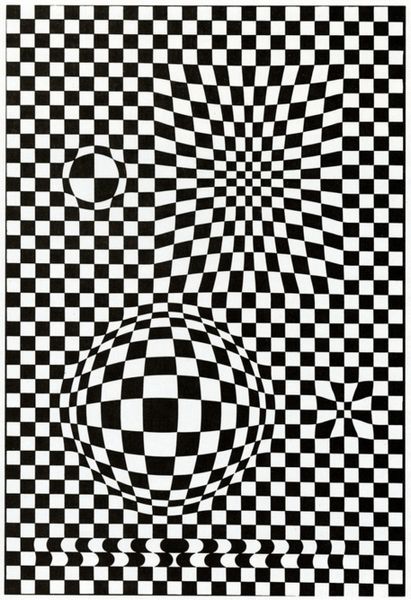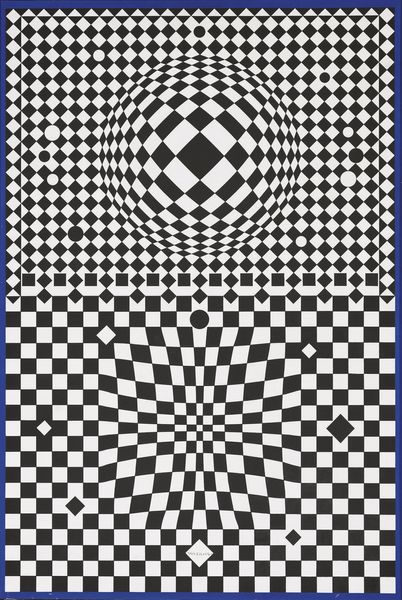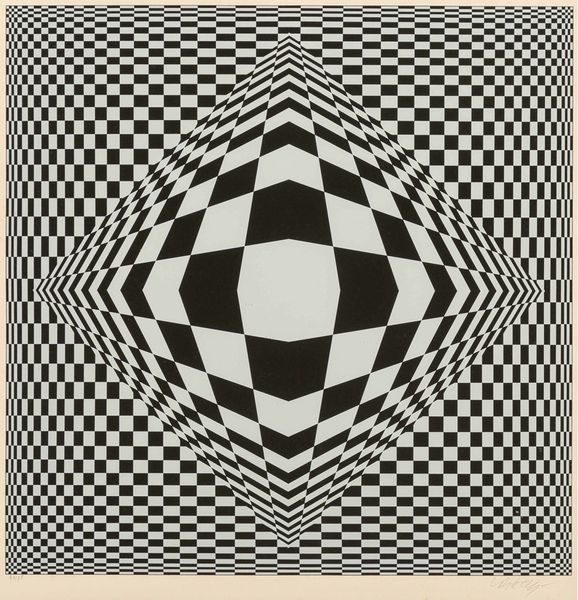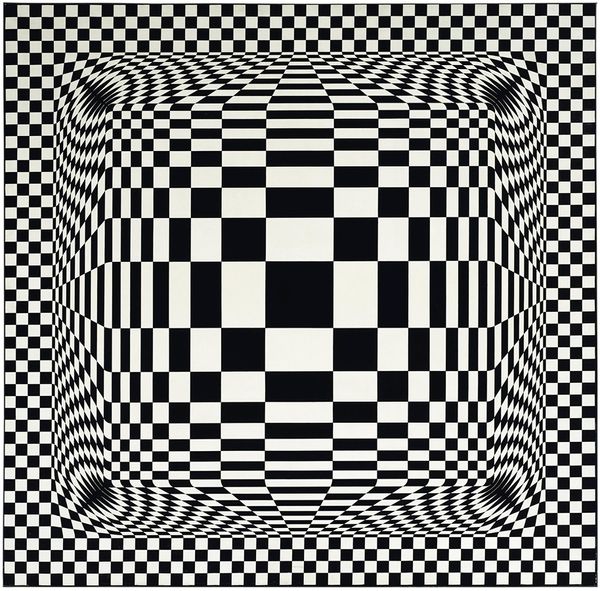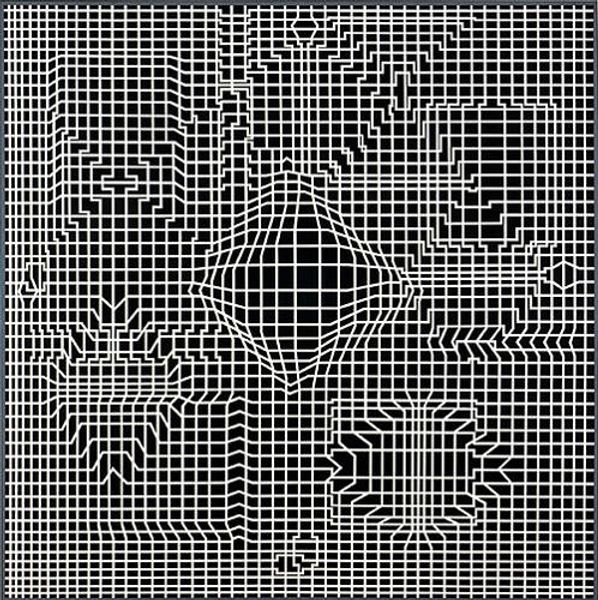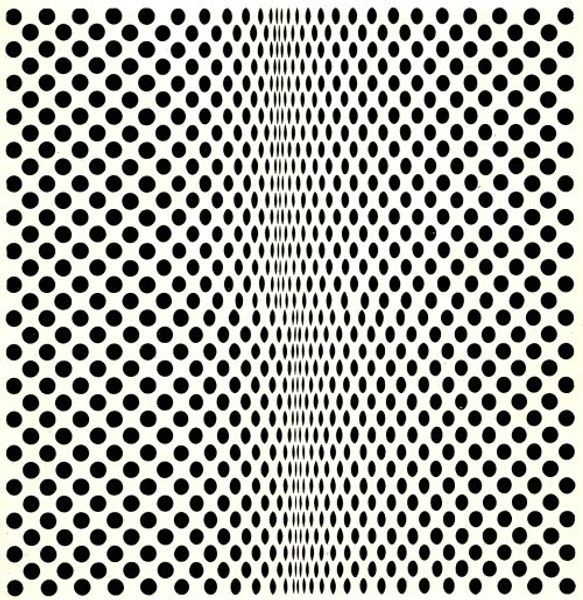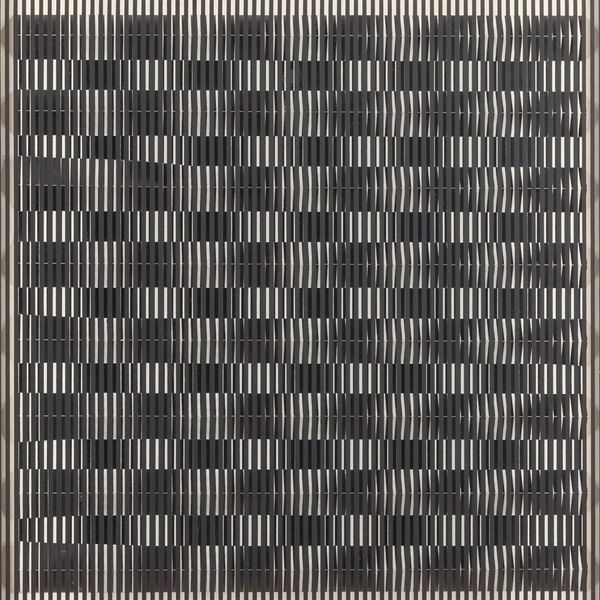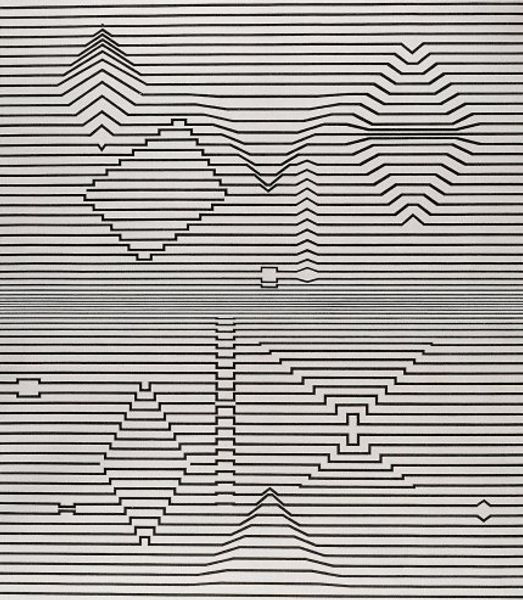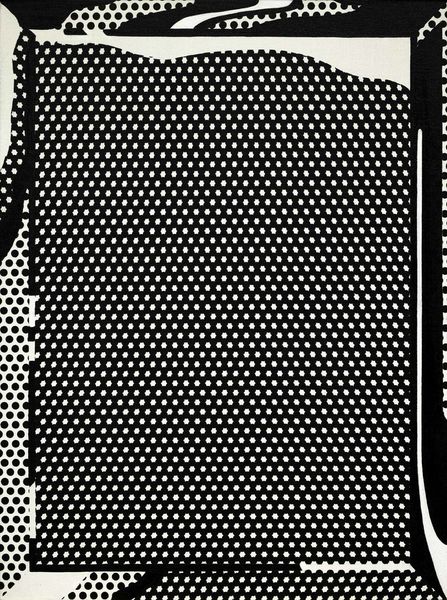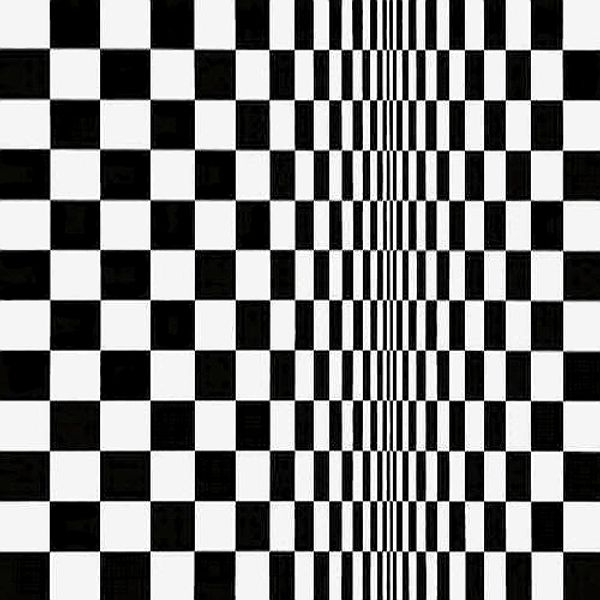
acrylic-paint
#
op-art
#
acrylic-paint
#
repetitive shape and pattern
#
minimal pattern
#
geometric
#
repetition of pattern
#
vertical pattern
#
abstraction
#
regular pattern
#
pattern repetition
#
layered pattern
#
funky pattern
#
combined pattern
#
repetitive pattern
Copyright: Modern Artists: Artvee
Editor: So, this is Victor Vasarely's "Yantsy" from 1980, done in acrylic paint. The checkerboard pattern is really striking and disorienting, like a warped reality. What jumps out at you? Curator: What I see is a fascinating dialogue about perception, rooted in its historical context. Op Art emerged during a period of significant social and political upheaval, yes? Think about the '60s and '70s: social unrest, the questioning of established norms. This push for change mirrors art. Doesn't the distortion of the grid symbolize a challenge to rigid structures, the disruption of the status quo? Editor: That's interesting! I was mainly focused on the visual illusion, but you’re saying it reflects broader societal shifts? The questioning of "reality"? Curator: Precisely. And it's not just about questioning; it’s about active participation. Vasarely sought to democratize art by making it accessible, reproducible, and visually impactful. How do you see its use of simple geometric shapes and stark contrasts playing into this idea of accessibility and equality? Editor: I guess because it's based on simple shapes, it feels like anyone could understand it, regardless of their background. It’s immediate and doesn't rely on any traditional artistic training. Curator: Exactly! Now, consider this: While Vasarely aimed for universal accessibility, can art truly transcend social and political boundaries? Can its visual language still hold the nuances of cultural experiences? How do diverse viewers, with varying cultural backgrounds, engage with this abstraction? Editor: That’s something I hadn’t considered before! There are so many layers to it, beyond just the initial visual effect. I guess there is no truly "universal" language. Curator: Indeed. And acknowledging that complexity is vital to how we experience the artwork. Editor: Absolutely. I see so many things I had completely missed. Thanks!
Comments
No comments
Be the first to comment and join the conversation on the ultimate creative platform.
